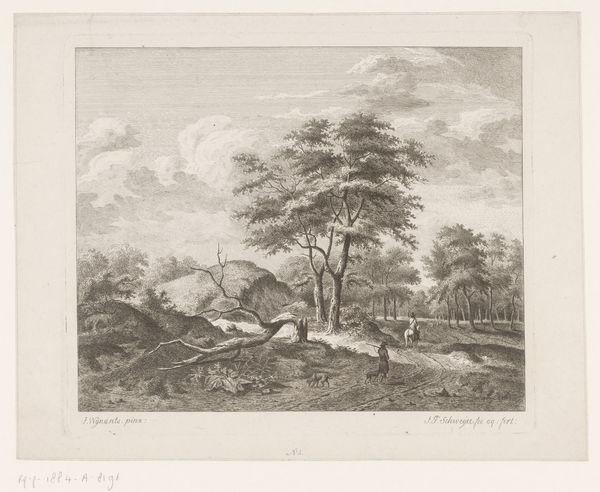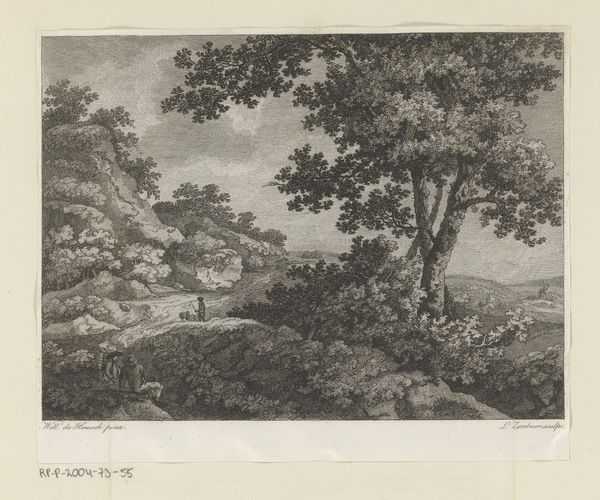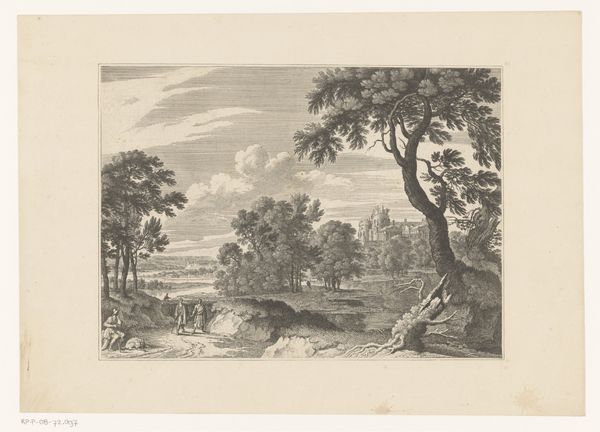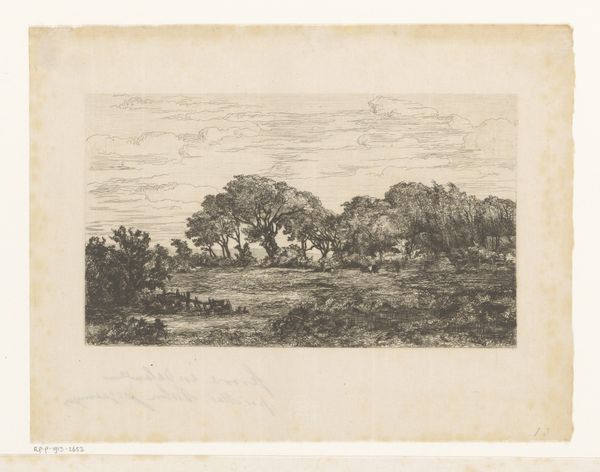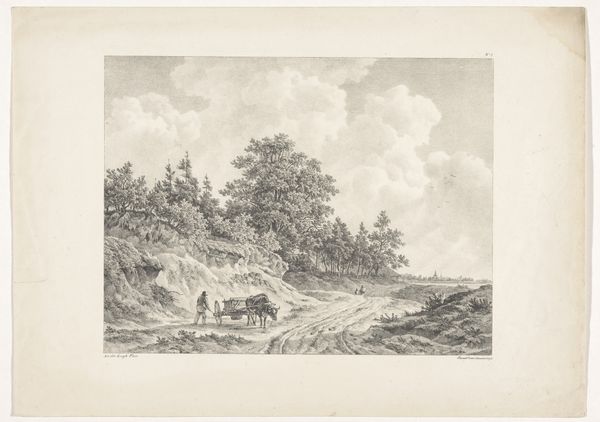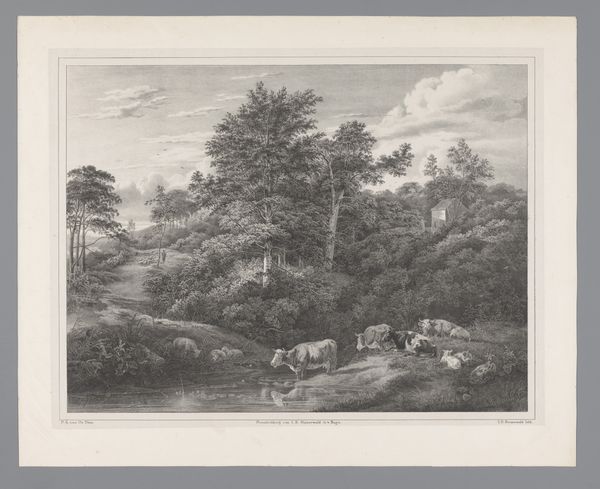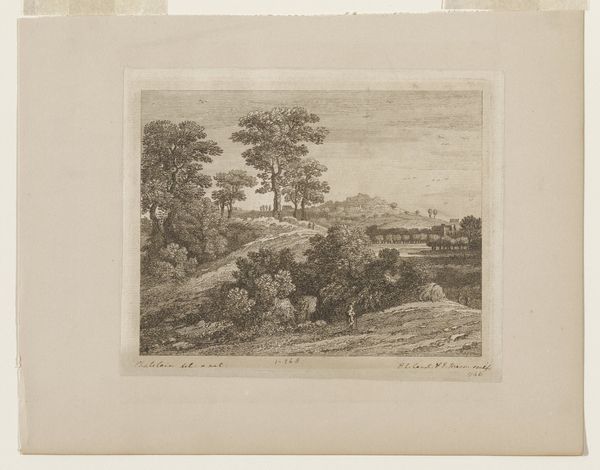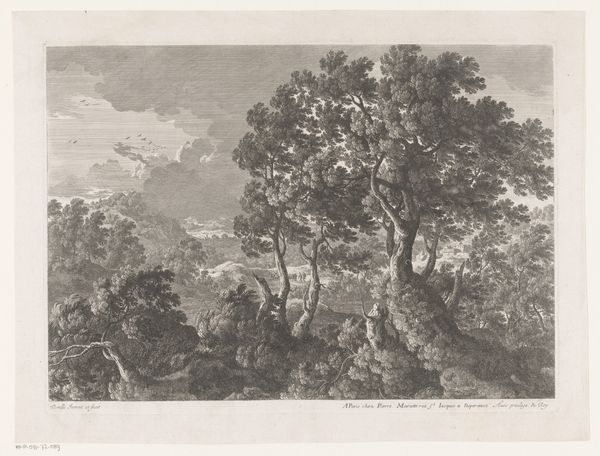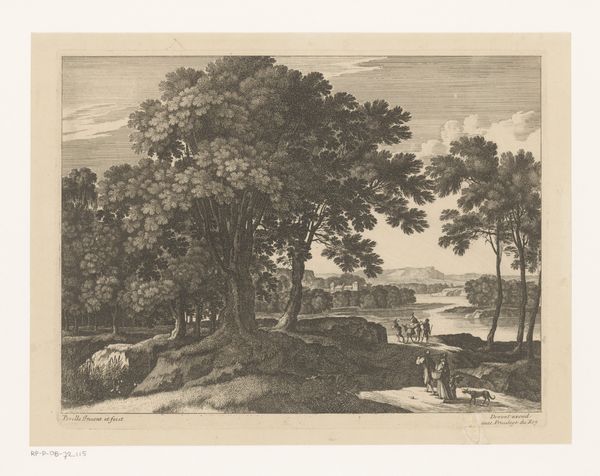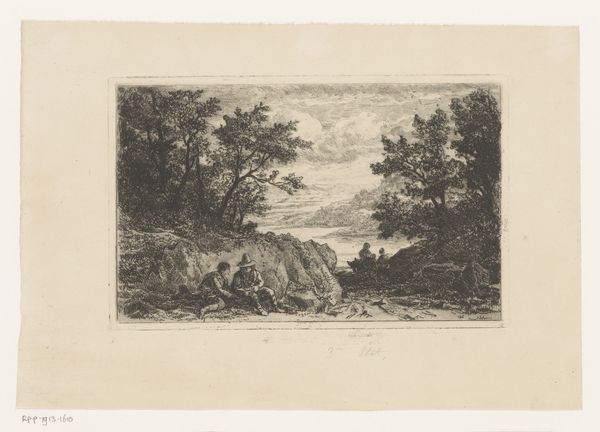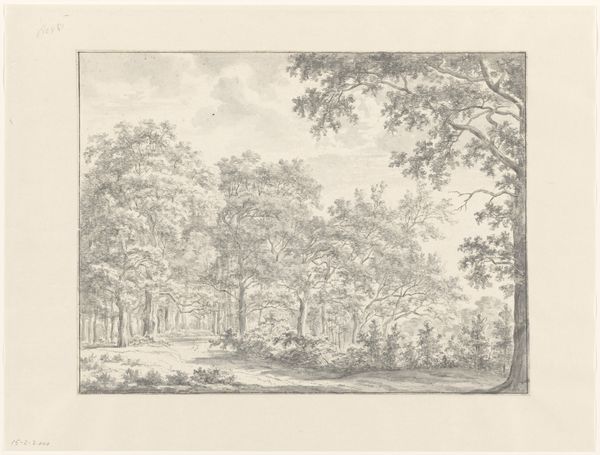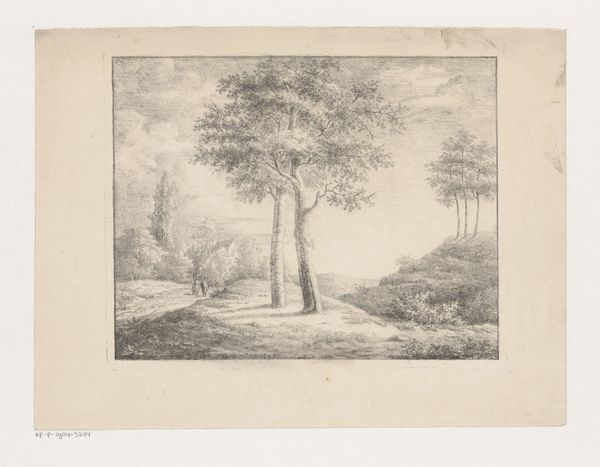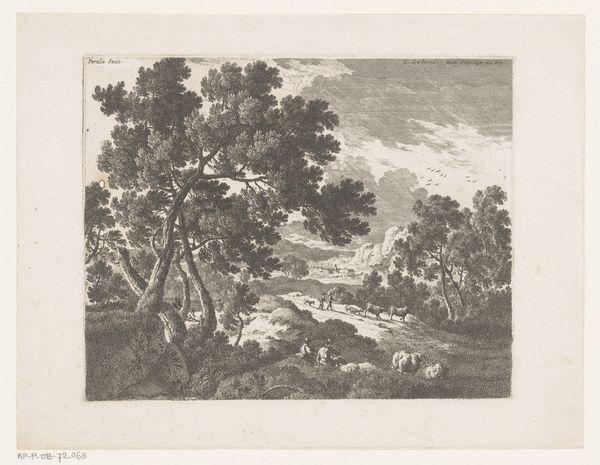
engraving
#
neoclacissism
#
landscape
#
pencil work
#
genre-painting
#
engraving
Dimensions: height 246 mm, width 322 mm
Copyright: Rijks Museum: Open Domain
Curator: Allow me to introduce "Boslandschap met herder bij een vijver," or "Wooded Landscape with Shepherd by a Pool," an engraving made in 1774, crafted by Louis Joseph Masquelier. Editor: Well, my first thought is that it’s remarkably still. A tranquil scene rendered in such precise detail. Almost dreamlike. Curator: The stillness aligns with the Neoclassical sensibilities of the time. Masquelier demonstrates a keen awareness of line and form, using engraving to create a highly structured composition. Notice how the trees frame the central scene. Editor: And the interplay of light and shadow enhances the sense of depth. But I wonder, to what extent does this idealized vision reflect the realities of pastoral life in that era? Were such scenes common or was this purely aspirational? Curator: Good questions. This kind of imagery served a function. Neoclassical art frequently invoked pastoral scenes, and it presented a purified vision of life close to nature. Its political context should not be ignored; an engraving was infinitely more reproducible than an oil painting. This made the image widely accessible to society. Editor: Absolutely, it's like mass producing "utopia" - for whom, and for what purpose? The humble shepherd becomes symbolic, part of a larger sociopolitical narrative. Curator: Indeed. Moreover, observe the engraving itself. Its material qualities contribute to the work’s aesthetic value, highlighting technical precision but lacking warmth perhaps? Editor: I agree; that meticulous control might feel sterile to some modern viewers. But the historical insight into its Neoclassical origins helps contextualize my own perspective. Curator: Precisely, the form guides our experience. The way the engraving medium emphasizes linear clarity impacts how we perceive the work and understand the period it represents. Editor: Thank you for revealing the method in the artist’s meticulousness! Curator: And thank you for prompting considerations beyond form. Art is always more expansive with multiple voices joining in!
Comments
No comments
Be the first to comment and join the conversation on the ultimate creative platform.
